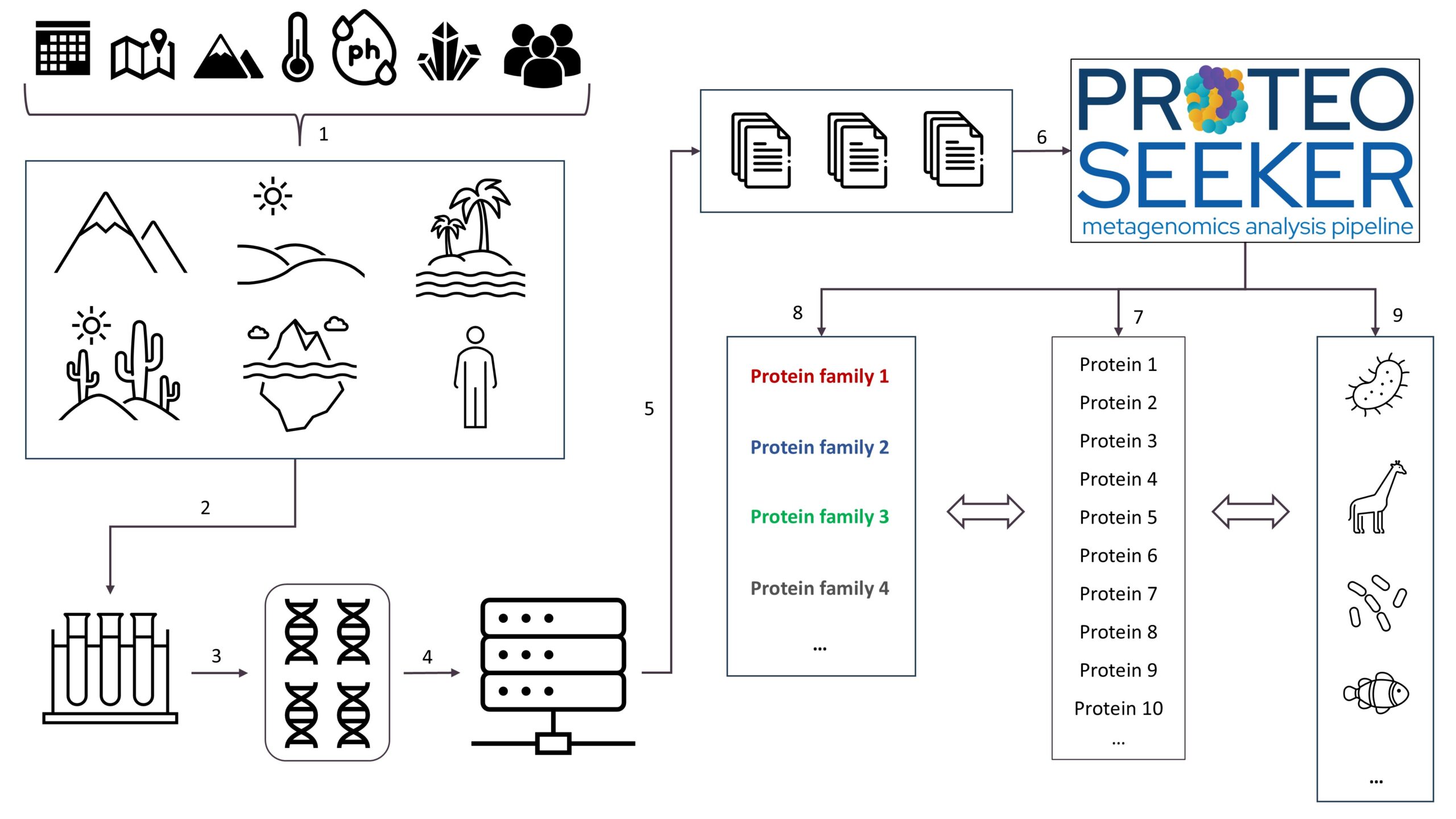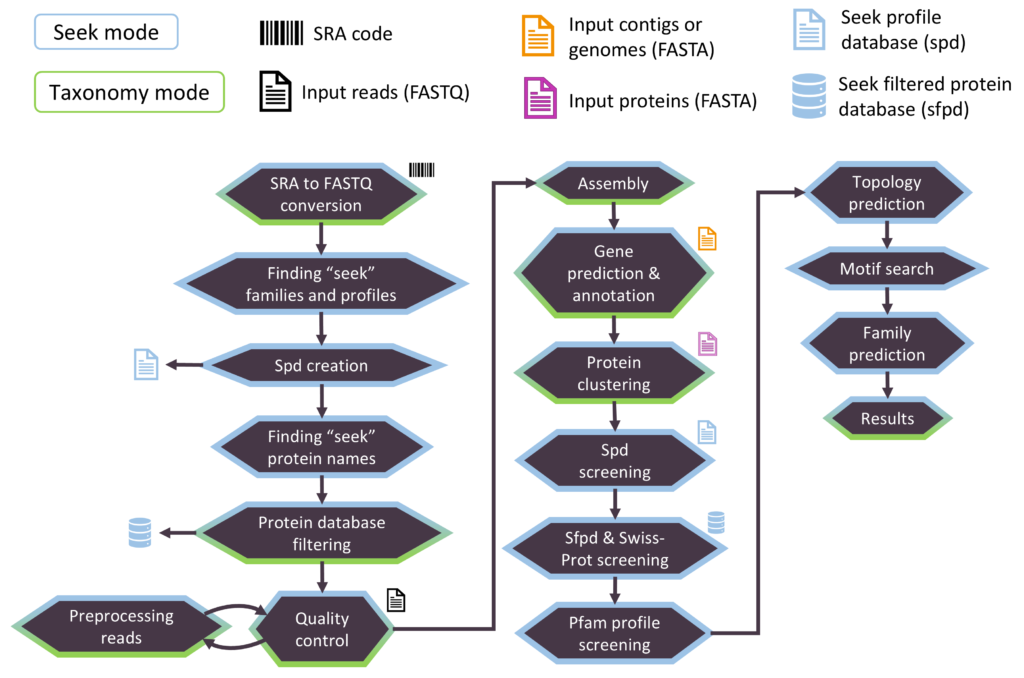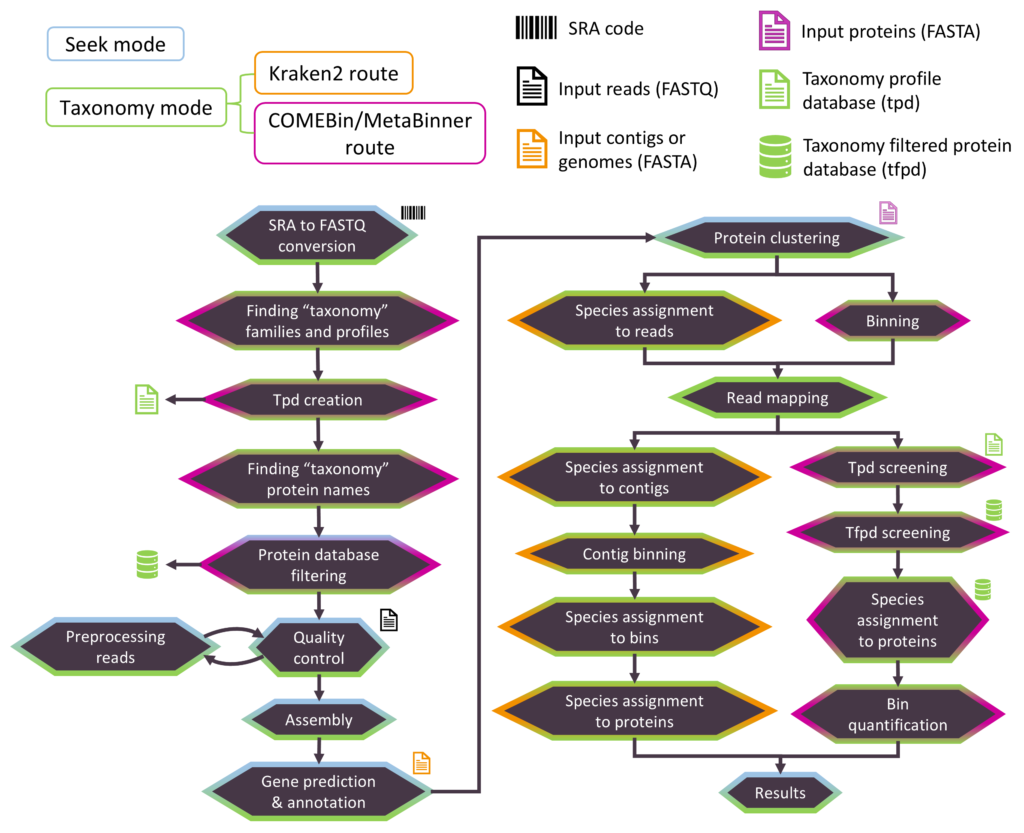[1] Anaconda Software Distribution. Computer software. Vers. 2-2.4.0. Anaconda, Nov. 2016. Web. https://anaconda.com.
[2] Sayers EW, Bolton EE, Brister JR, Canese K, Chan J, Comeau DC, Connor R, Funk K, Kelly C, Kim S, Madej T, Marchler-Bauer A, Lanczycki C, Lathrop S, Lu Z, Thibaud-Nissen F, Murphy T, Phan L, Skripchenko Y, Tse T, Wang J, Williams R, Trawick BW, Pruitt KD, Sherry ST. Database resources of the national center for biotechnology information. Nucleic Acids Res. 2022 Jan 7;50(D1):D20-D26. doi: 10.1093/nar/gkab1112. PMID: 34850941; PMCID: PMC8728269.
[3] https://www.bioinformatics.babraham.ac.uk/projects/fastqc/
[4] sourceforge.net/projects/bbmap/
[5] Bushnell B, Rood J, Singer E. BBMerge – Accurate paired shotgun read merging via overlap. PLoS One. 2017 Oct 26;12(10):e0185056. doi: 10.1371/journal.pone.0185056. PMID: 29073143; PMCID: PMC5657622.
[6] Li D, Liu CM, Luo R, Sadakane K, Lam TW. MEGAHIT: an ultra-fast single-node solution for large and complex metagenomics assembly via succinct de Bruijn graph. Bioinformatics. 2015 May 15;31(10):1674-6. doi: 10.1093/bioinformatics/btv033. Epub 2015 Jan 20. PMID: 25609793.
[7] Wood DE, Salzberg SL. Kraken: ultrafast metagenomic sequence classification using exact alignments. Genome Biol. 2014 Mar 3;15(3):R46. doi: 10.1186/gb-2014-15-3-r46. PMID: 24580807; PMCID: PMC4053813.
[8] Wood DE, Lu J, Langmead B. Improved metagenomic analysis with Kraken 2. Genome Biol. 2019 Nov 28;20(1):257. doi: 10.1186/s13059-019-1891-0. PMID: 31779668; PMCID: PMC6883579.
[9] Wang Z, You R, Han H, Liu W, Sun F, Zhu S. Effective binning of metagenomic contigs using contrastive multi-view representation learning. Nat Commun. 2024 Jan 17;15(1):585. doi: 10.1038/s41467-023-44290-z. PMID: 38233391; PMCID: PMC10794208.
[10] Wang Z, Huang P, You R, Sun F, Zhu S. MetaBinner: a high-performance and stand-alone ensemble binning method to recover individual genomes from complex microbial communities. Genome Biol. 2023 Jan 6;24(1):1. doi: 10.1186/s13059-022-02832-6. PMID: 36609515; PMCID: PMC9817263.
[11] Van der Jeugt F, Dawyndt P, Mesuere B. FragGeneScanRs: faster gene prediction for short reads. BMC Bioinformatics. 2022 May 28;23(1):198. doi: 10.1186/s12859-022-04736-5. PMID: 35643462; PMCID: PMC9148508.
[12] Fu L, Niu B, Zhu Z, Wu S, Li W. CD-HIT: accelerated for clustering the next-generation sequencing data. Bioinformatics. 2012 Dec 1;28(23):3150-2. doi: 10.1093/bioinformatics/bts565. Epub 2012 Oct 11. PMID: 23060610; PMCID: PMC3516142.
[13] Camacho C, Coulouris G, Avagyan V, Ma N, Papadopoulos J, Bealer K, Madden TL. BLAST+: architecture and applications. BMC Bioinformatics. 2009 Dec 15;10:421. doi: 10.1186/1471-2105-10-421. PMID: 20003500; PMCID: PMC2803857.
[14] Buchfink B, Reuter K, Drost HG. Sensitive protein alignments at tree-of-life scale using DIAMOND. Nat Methods. 2021 Apr;18(4):366-368. doi: 10.1038/s41592-021-01101-x. Epub 2021 Apr 7. PMID: 33828273; PMCID: PMC8026399.
[15] http://hmmer.org/
[16] UniProt Consortium. UniProt: the Universal Protein Knowledgebase in 2023. Nucleic Acids Res. 2023 Jan 6;51(D1):D523-D531. doi: 10.1093/nar/gkac1052. PMID: 36408920; PMCID: PMC9825514.
[17] Boutet E, Lieberherr D, Tognolli M, Schneider M, Bansal P, Bridge AJ, Poux S, Bougueleret L, Xenarios I. UniProtKB/Swiss-Prot, the Manually Annotated Section of the UniProt KnowledgeBase: How to Use the Entry View. Methods Mol Biol. 2016;1374:23-54. doi: 10.1007/978-1-4939-3167-5_2. PMID: 26519399.
[18] Poux S, Arighi CN, Magrane M, Bateman A, Wei CH, Lu Z, Boutet E, Bye-A-Jee H, Famiglietti ML, Roechert B, UniProt Consortium T. On expert curation and scalability: UniProtKB/Swiss-Prot as a case study. Bioinformatics. 2017 Nov 1;33(21):3454-3460. doi: 10.1093/bioinformatics/btx439. PMID: 29036270; PMCID: PMC5860168.
[19] Pedruzzi I, Rivoire C, Auchincloss AH, Coudert E, Keller G, de Castro E, Baratin D, Cuche BA, Bougueleret L, Poux S, Redaschi N, Xenarios I, Bridge A. HAMAP in 2015: updates to the protein family classification and annotation system. Nucleic Acids Res. 2015 Jan;43(Database issue):D1064-70. doi: 10.1093/nar/gku1002. Epub 2014 Oct 27. PMID: 25348399; PMCID: PMC4383873.
[20] Käll L, Krogh A, Sonnhammer EL. A combined transmembrane topology and signal peptide prediction method. J Mol Biol. 2004 May 14;338(5):1027-36. doi: 10.1016/j.jmb.2004.03.016. PMID: 15111065.



